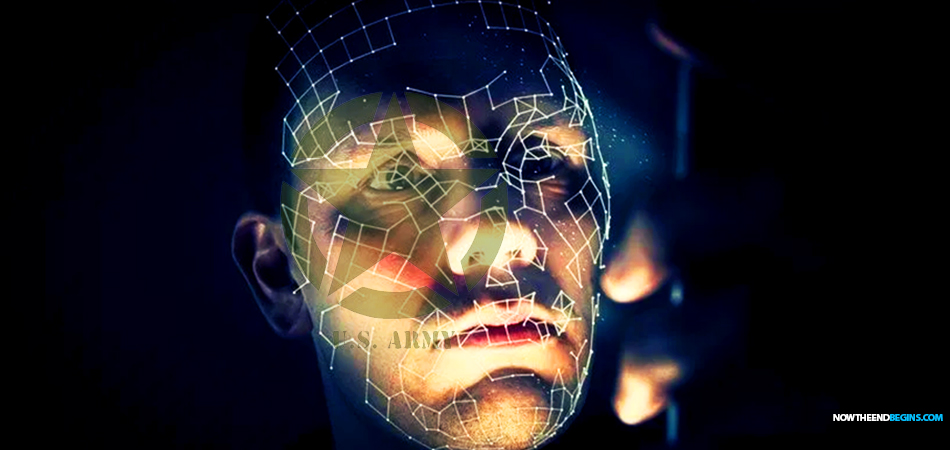
The Army wants to make sure drivers entering bases through automated checkpoints are, in fact, who they claim to be, and is developing a new biometric camera system to assist.
Facial recognition is not new, when I worked for Citi ten years ago, we had to sign ourselves in and out of the main building via facial recognition. But back then it was the exception, in our day we will watch it become the rule, and the 'new normal'. Biometric technology is here to stay because Revelation 13 says the Mark of the Beast is a biometric currency controller. Pretty good 'guess' for 96 AD, wouldn't you say? With all of our 'technological advances', we still haven't caught up with that archaic, dusty old King James Bible.
"And he causeth all, both small and great, rich and poor, free and bond, to receive a mark in their right hand, or in their foreheads: And that no man might buy or sell, save he that had the mark, or the name of the beast, or the number of his name. Here is wisdom. Let him that hath understanding count the number of the beast: for it is the number of a man; and his number is Six hundred threescore and six." Revelation 13:16-18 (KJB)
If you want to know what's coming next on the end times timeline, you need to turn off that idiot box with its fake news and demonic agenda, and open your King James Bible which is a 'lamp unto you feet', and a 'light unto you path'. You would be left in the darkness with the light of the glorious gospel of the grace of God to lead your way for you.
Army Wants to Automate Base Access With Facial Recognition at Drive-Thru Checkpoints
FROM NEXTGOV: The military branch issued a call on its Small Business Innovation Research, or SBIR, broad agency announcement—a contract vehicle used for working with small businesses on phased, iterative development programs—seeking early-stage design for a camera system able to pull usable images of drivers approaching checkpoints and matching those photos against a facial biometric database.
“The results would be displayed to the guard with a photo of the driver indicating an access granted or access denied response in time to allow uninterrupted vehicle traffic flow for approved users,” the call states.
For this specific use, the Army would compare the images taken by the camera with a preset gallery of approved entrants. This method threads the needle between one-to-one verification methods, which compare a new image with known photos of a person to verify their identity, and one-to-many identification algorithms, which compare an image to a broad database in search of the person’s identity.
This middle ground—used by other government agencies like Customs and Border Protection for their Entry/Exit facial recognition program—has a higher accuracy rate than one-to-many, so long as the environment allows for capture of a usable image.
For the Army’s automated checkpoints, this will be a significant factor. The solution must be able to accurately capture a facial image through a windshield “in various weather conditions during the day and nighttime,” the call states. The first phase will last six months, with a ceiling of $259,613 per proposal.
The second phase includes developing and demoing a prototype system on a government-built simulated checkpoint. By that point, the system must be able to identify passengers with a 100% success rate.
The third phase will focus on deploying the system at specific Army facilities. The original BAA includes additional information about the various phases. In a separate call on the same BAA, Army contracting officials asked for proposals to automate the cleaning of biometric data in the Defense Department’s Automated Biometric Identification System, or ABIS, the main biometric database used by the military.
“Much of this input is from old and nearing obsolescence, legacy collection systems that do not limit inputs that are incorrect or limit in any meaningful way based on image capture quality,” the second call states. “For this reason, the authoritative data base includes a large number of biometric records with errors, missing data or low-quality images.”
The DOD is embarking on a three- to five-year effort “to first, cleanse the data, and second, to continue to assess all incoming data, in order to rank and associate a data quality score for all images in the data base.”
The first phase of that program will focus on design concepts for machine-learning tools that can identify and rank the quality of data within ABIS. Future phases will focus on developing working prototypes and realigning existing systems to work with this new solution. Questions for both calls are due by noon May 4. Proposals for both will be accepted through noon May 18. READ MORE
No comments:
Post a Comment